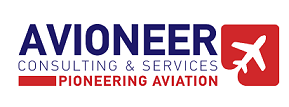DELIVERED IN CYPRUS OR GREECE (by an EASA Part-147 approved MTO)
For an individual to gain their EASA Part-66 Aircraft Maintenance License (AML), they must undergo:
- • Basic Knowledge Training, which consists of theoretical (classes) and practical (workshops) at an approved Aircraft Maintenance Training Organisation (AMTO), also known as Part-147 organisation.
- • On Job Training – OJT (actual work experience), at an aircraft Maintenance and Repair Organisation (MRO), also known as Part-145 organisation.
At the successful completion of the Basic Knowledge Training and experience, the candidates can apply to any EU Competent Authority for their Basic Part 66 License.
The Category A licence covers minor scheduled line maintenance and simple defect rectification. The licence is divided into the following subcategories:
- • A1 turbine-engined fixed wing aeroplane
- • A2 piston-engined fixed wing aeroplane
- • A3 turbine-engined helicopter
- • A4 piston-engined helicopter
The Category B1 licence covers maintenance of aircraft structures (airframe), powerplant and mechanical and electrical systems. The licence is divided into the following subcategories:
- • B1.1 turbine-engined fixed wing aeroplane
- • B1.2 piston-engined fixed wing aeroplane
- • B1.3 turbine-engined helicopter
- • B1.4 piston-engined helicopter
The Category B2 licence covers maintenance of avionics and electrical systems, and applies to all aircraft types.

These courses are available and approved only at our partner MTO. Their aim is to provide options for faster and more cost-effective completion of the B1.1/B2 training, by combining courses and work.
This is a custom A1 course, enhanced to 1200 hours to cover the great majority of B1.1 License subjects. It offers the flexibility to a student to study for one year and then start their On Job Training which lasts for another year. At that point they get their A1 license. Then they have the option to continue studying for their B1.1/B2 license while working.
Any other license types can be easily added to the above by just completing the required additional modules.

- • CATEGORY A: 1-year (after completion of the Basic Knowledge Training)
- • CATEGORY B1/B2:
- • 2-years (after completion of the Basic Knowledge Training)
- • 3-years for technical college graduates
- • 5-years for academic degree graduates
- • 1-year in civil aircraft environment for military or police aircraft engineers
Once the individual receives their Part-66 Aircraft Maintenance Licence, they must also add to their license “Type Endorsements” – specific certificates for each type of aircraft they would like to be able to work on. These certificates are endorsed on an engineer’s license by the competent authority, after they successfully undergo the relevant training and assessments (performed on the actual aircraft).1
Finally, the engineer may be granted the privilege to sign for the release of aircraft, for maintenance work that has been performed on a component or the aircraft itself. This release is commonly known as the Certificate of Release to Service (CRS). This privilege is granted to the engineer by the Quality Manager of a Part-145 organization.
